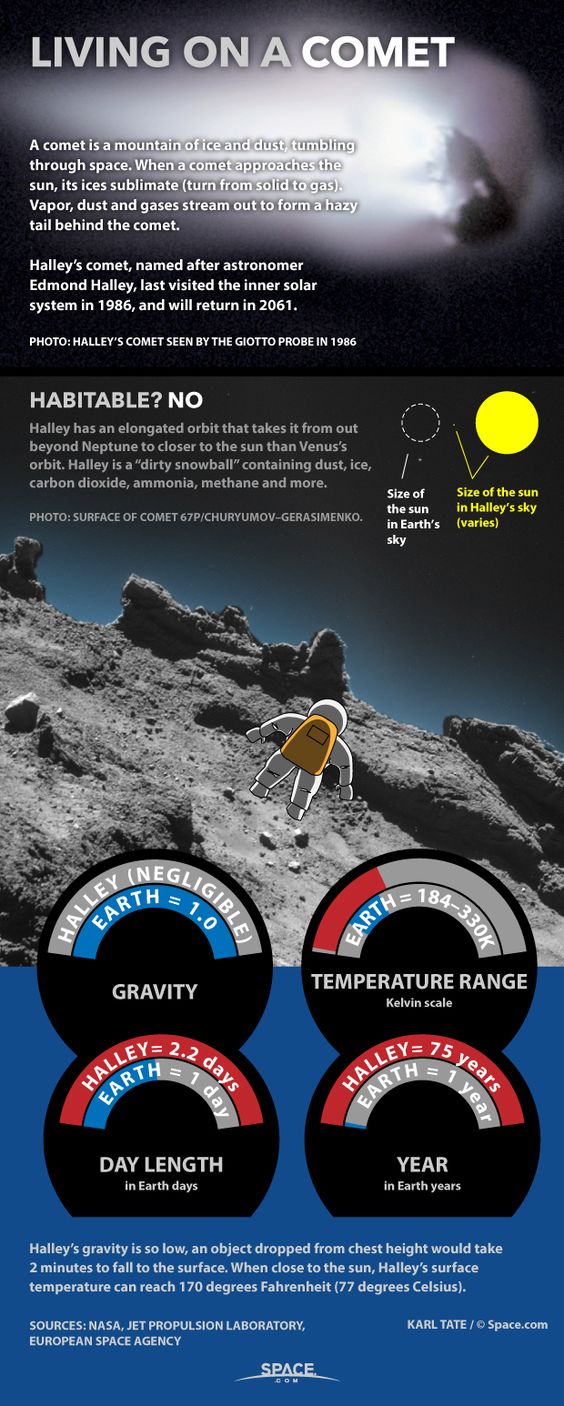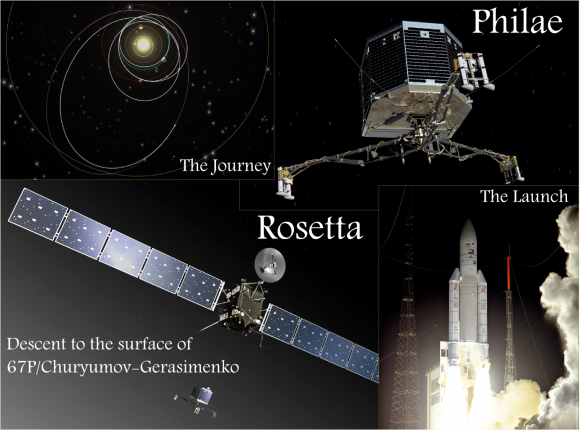Mission to Comets
This page was last updated on AUGUST 1, 2017

C O M E T M I S S I O N S
Living on a Comet

Meet a Comet

Comet 67P/Churyumov-Gerasimenko.The 10 Year Mission

After a ten year journey, Rosetta and Philae will attempt the first soft landing upon a comet?s surface. (Credits: ESA, Composite, T.Reyes)
ESA has announced that on September 15, the team from the Rosetta mission will reveal the landing site for the Philae lander.
After traveling on a 10-year, 6.4 billion kilometer journey, Rosetta has been gently captured by comet 67P/Churyumov-Gerasimenko, an oddly-shaped
and mysterious two-lobed comet. Yet, how will the small Philea attempt the landing? Very carefully, because a second chance is not possible.
Philae cannot pull up and try again.
C O M E T S!!!(Siding Spring)
Asteroids are small, metallic or rocky in composition, and have no atmosphere.
Most asteroids orbit the sun within a broad belt located between the orbits of Mars and Jupiter:
the asteroid belt. Millions of asteroids are under 0.6 mile (1 kilometer) in diameter, but there are many that are larger.
The biggest, Ceres, is 590 miles (950 kilometers) in diameter. The asteroids are believed to be mostly material left over from the formation
of the solar system.
It is also unknown what force in the depths of the Oort cloud nudged the comet into its encounter with Mars and the Sun.
Like the millions of other Oort cloud objects, Siding Spring has spent its existence ? 4.5 Billion years, in the darkness of deep space,
with its parent star, the Sun, nothing more than a point of light, the brightest star in its sky.
The gravitational force that nudged it may have been a passing star, another cometary body or possibly a larger trans-Neptunian object
the size of Pluto and even as large as Mars or the Earth.
Click here to return to top of page




